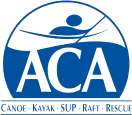 For sea kayakers, the surfing experience can be thrilling, but is limited by the length and lack of maneuverability of a sea kayak. If you are willing to invest in a boat that is designed for surf or whitewater, a whole new world of opportunities for fun and excitement open up.
For sea kayakers, the surfing experience can be thrilling, but is limited by the length and lack of maneuverability of a sea kayak. If you are willing to invest in a boat that is designed for surf or whitewater, a whole new world of opportunities for fun and excitement open up.
There is a wide range of boat options available to the surf kayaker. The most appropriate craft for you is ultimately the one that best suits your skills, style, wave preference, and budget. Listed below are different categories of surf craft with their various pros and cons. The primary design differences between them - other than the obvious factors of sit-on-top versus decked boats are:
- Length—A longer boat will typically be faster, at least until you've caught the wave. This speed can make catching the wave much easier and can also minimize the amount of time that you spend paddling out through the waves. The price that you pay for this is weight and reduced maneuverability.
- Rocker (amount of curvature of the hull measured bow to stern)—A boat with a lot of rocker (like most modern whitewater boats), will be more forgiving of certain things, like burying the nose of your boat when you reach the bottom of the wave (pearling), but it will typically be slower because the curvature ends up pushing the water aside rather than sliding over it.
- Displacement hulls—Virtually all older boats have displacement hulls: they cut a swath through the water rather than slide over the top. This is by far the most efficient hull design at lower speeds, and is therefore generally preferable for the same reasons as a longer boat. Displacement hulls are also generally easier to roll as well, which makes older displacement hull river kayaks a popular entry level surf kayak choice. The problem is that a rounded displacement hull has very little to grab the wave with. Imagine trying to ski with soft, rounded edges rather than strips of sharpened stainless steel; your turning ability would be limited at best.
- Planing hulls—A boat with a planing hull has very low speed potential until it gets on a wave. Then it can be extremely fast, because it is largely skimming the surface of the water rather than pushing through it. A planing hull boat has a relatively flat bottom, similar to a surf board. Where the hull meets the sides you will find a relatively sharp transition, and it is this transition (or chine) that gives planing hull boats most of their superior maneuverability. When you lean towards an edge, the edge "bites" the wave and you turn that direction. (Note: this is the opposite of how you carve turns on a sea kayak. Some people complain that their instincts get confused when they alternate between boat types.)
- WARNING regarding SIT-ON-TOP SURF KAYAKS: An abandoned sit-on-top in the surf zone can be extremely dangerous. Whereas an abandoned decked boat tends to fill with water which slows it down, an SOT stays on the surface and will be pushed further and faster by the wave. It is highly recommended that you use a paddle leash when surfing SOTs. With a leash, if you become detached from your boat, and provided you don't let go of the paddle, you become an anchor that will reduce the likelihood of your boat hurting others. It will also lessen your swim back to your boat and shorten your exposure to the elements. When selecting a leash, make sure that it is elastic and compacts on itself (The ones coiled like an old telephone cord or slinky are best). The reasons for this are that it will cushion the yank when the cord pulls tight, and more importantly WILL KEEP YOU FROM LYNCHING YOURSELF. Never have unsecured cords dangling from your gear.

